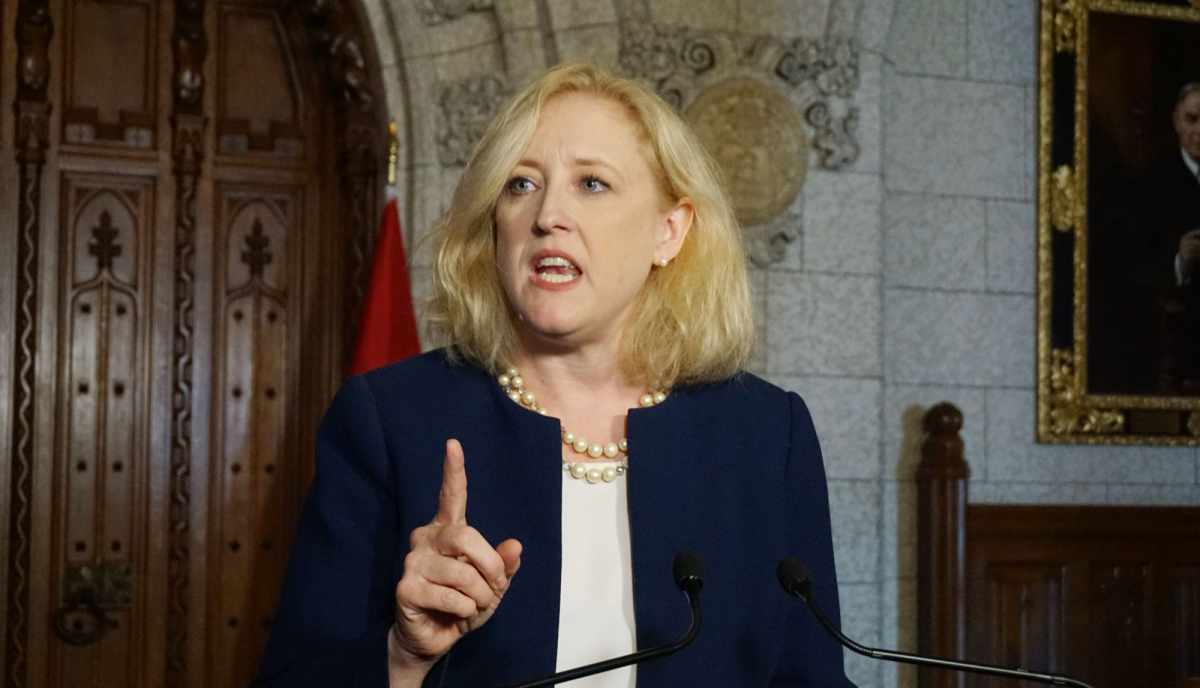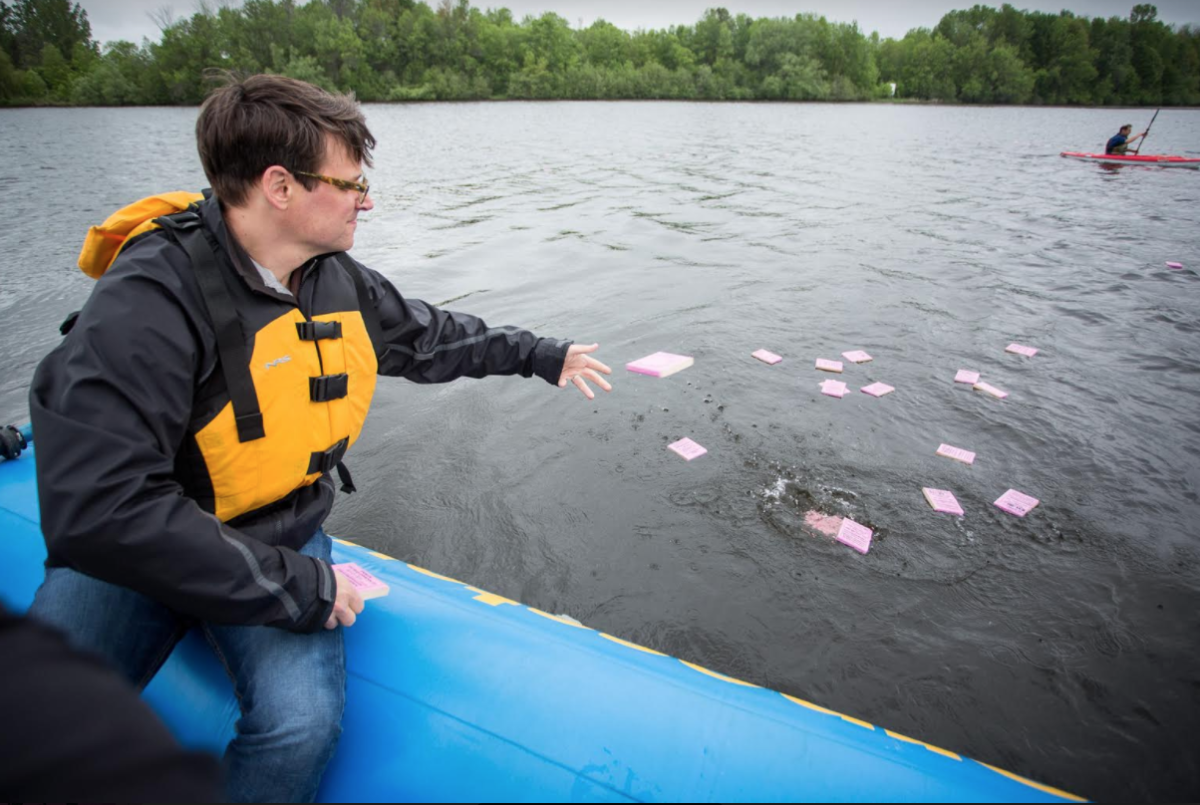Support strong Canadian climate journalism for 2025
Did regulation kill Energy East?
Conservative leader Andrew Scheer thinks it did. So does Premier Brad Wall of Saskatchewan. TransCanada, the project’s proponent, has been circumspect, merely announcing that “changed circumstances” led them to terminate the project earlier this month.
Energy East would have carried 1.1 million barrels of crude oil per day from Alberta to New Brunswick using repurposed existing natural gas pipelines for much of its length. At more than 4,500 kilometres, this project would have been the longest pipeline in the country.
It would have required co-operation among the federal government, six provinces, 75 municipalities and more than 50 First Nations. In many ways, this mega-project would have been the most ambitious infrastructure build ever undertaken in Canada, surpassing the political difficulties associated with the construction of the national railways at the end of 19th century.
All energy mega-projects are subject to review by the National Energy Board, the regulatory body that is responsible for overseeing energy projects, pipelines and trade in Canada. The review incorporates extensive public consultation and an assessment of the project’s environmental impacts.
The Liberals made election promises in 2015 to review and improve the environmental assessment process related to energy projects. It set out five principles to guide these improvements, including more time for consultations, greater consultation with Indigenous peoples and the consideration of upstream and downstream emissions generated by the project.
New reviews and delays
At the beginning of 2016, the Liberal government announced it would extend the reviews of two pipeline projects, Energy East and Kinder Morgan’s Trans Mountain pipeline to Burnaby, B.C., to improve the consultation process.
This posed a challenge for TransCanada and added cost to the process. Then, in August 2016, the entire consultation process was derailed due to conflict-of-interest issues, that were uncovered by National Observer. It was restarted from scratch in early 2017 — a delay that exposed the Energy East project to more regulatory uncertainty.
A report outlining a new vision for environmental assessment, which included the five proposed principles, was delivered to the environment and climate change minister at the end of March 2017. The Liberal government is currently considering the implications of the proposed changes.
This undoubtedly led to the National Energy Board’s decision in August 2017 to include the upstream and downstream emissions associated with new oil production and consumption when it considered the environmental implications of the Energy East project.
TransCanada put Energy East on hold in September 2017 and finally cancelled it a month later. The company announced it will write down an estimated $1 billion in costs associated with the terminated project.
So, did regulation kill Energy East? Many other factors also hurt its chances of getting the green light.

The future of energy mega-projects
President Trump’s restart of Keystone XL (TransCanada’s other megaproject), as well as an ongoing slump in oil prices and a slowdown in Alberta oilsands production growth all likely had much more impact on the decision to terminate the project. They may well have led to the project’s end even without the regulatory shifts.
But it’s also clear that changing the way the Energy East project would be evaluated during the active assessment period complicated the issue unnecessarily.
Canada will see more proposals for new energy mega-projects in the future. If these types of projects are to succeed, the regulatory landscape related to environmental assessment must be predictable and consistent.
Energy projects face a great deal of market uncertainty, and it’s appropriate for companies to take on the associated business risk. But it’s the job of government to reduce the policy risk by providing a transparent and stable regulatory environment.
Project proponents face significant challenges if the rules are changed in the middle of an assessment. This was particularly true in the case of Energy East, where the extended timeline exposed the project to extreme shifts on the regulatory side. Future projects should be assessed under consistent rules from start to finish.
This is not to say that regulation is undesirable. It’s not unreasonable for Canada to set aggressive rules regarding environmental assessment, particularly when these rules help us meet goals that are broadly supported by Canadians.
Increased consultation with Indigenous peoples and a reduced national greenhouse gas emissions footprint are both worth the effort – and these changes will increase the confidence that Canadians have in future energy mega-projects.
This article was originally published in The Conversation and has been reprinted with permission.
![]()






Comments
What sinks prpeline projects is not the protective regulations, it is the risks that these regulations expose. Pipelines pose a risk. We know this because we are discovering that pipelines leak far more often than we were previously told. Even new pipelines leak as happened in Alberta. It seems that companies dealt with the risk by covering up mishaps rather than building safer but more expensive pipelines. What makes these projects more expensive is not the regulations, ir is the cost of being required to build pipelines that do not leak, that do not put people and the environment at risk.
What sinks prpeline projects is not the protective regulations, it is the risks that these regulations expose. Pipelines pose a risk. We know this because we are discovering that pipelines leak far more often than we were previously told. Even new pipelines leak as happened in Alberta. It seems that companies dealt with the risk by covering up mishaps rather than building safer but more expensive pipelines. What makes these projects more expensive is not the regulations, ir is the cost of being required to build pipelines that do not leak, that do not put people and the environment at risk.
Exactly. But there is another long term cost of industry fudging the risks, covering up leaks, being in regular non-compliance with regard to monitoring, while spending money that could be put to doing things right, into advertising propoganda that only convinces the people who aren't paying attention anyway.
Over time, industry credibility takes a hit. No one in the least informed, believes their PR, and people who live where these pipelines are to go, take the half hour needed to find lots of evidence of negligence and cover up in other jurisdictions.
Who wants to put their land and water at risk, so a big corporation, or the Irvings, can continue to make bit profits? What land based people can continue to believe, in the face of all the evidence to the contrary, that their patrimony is secure?
And none of this even raises the longer term issue of Climate Change. Although there too, proponents who argue these pipelines will have a 0 effect on emissions, must believe the general public is composed of morons. All along the work process, from extraction to transportaton, CO2 is a by-product. Every high school science student knows that!